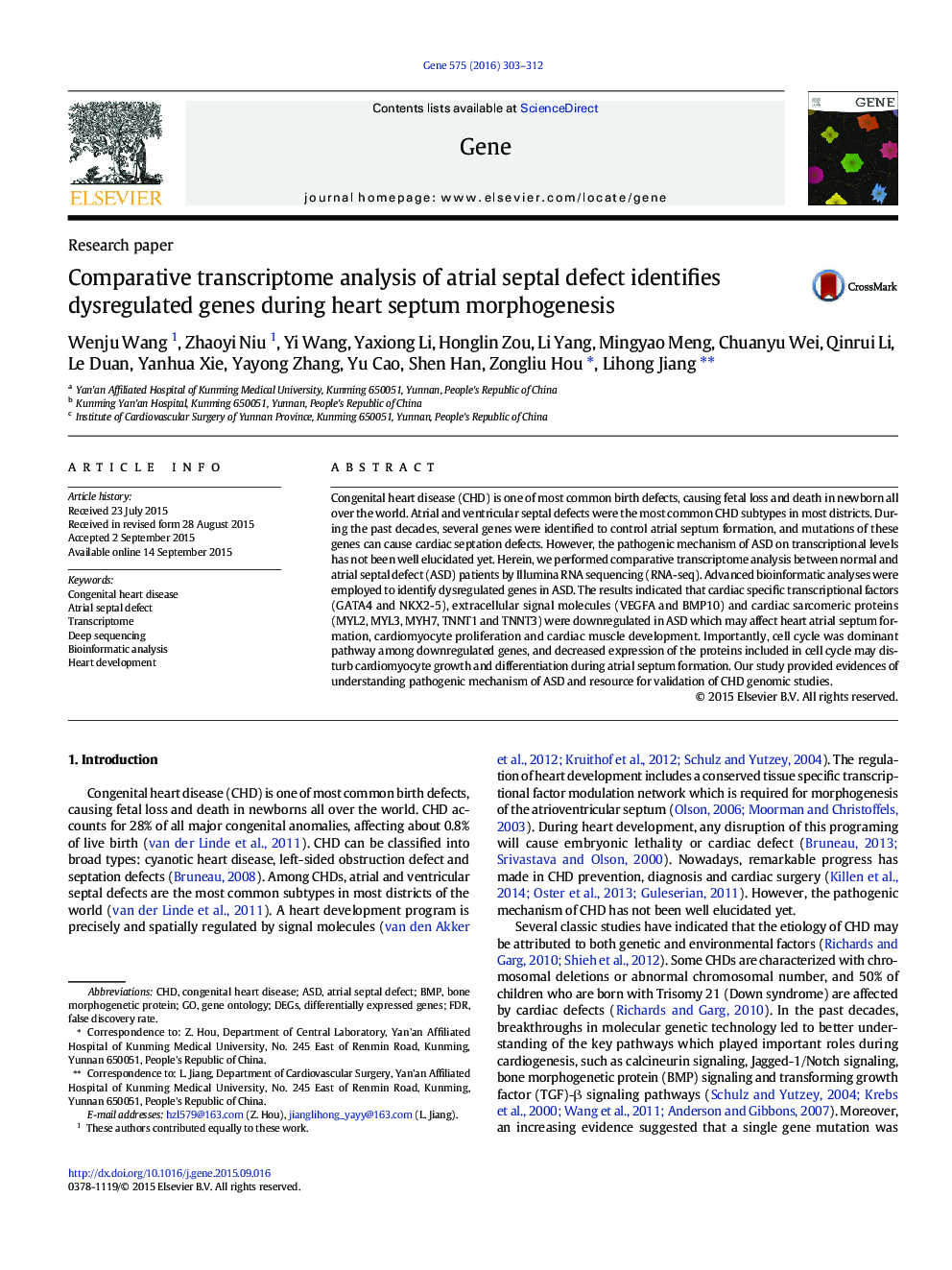| Article ID | Journal | Published Year | Pages | File Type |
|---|---|---|---|---|
| 2815411 | Gene | 2016 | 10 Pages |
•We have performed comparative transcriptome analysis between ASD and normal control.•The results indicated that transcriptional factors were downregulated in ASD.•Extracellular signals and sarcomeric proteins were aberrantly expressed in ASD.•Cell cycle was dominant pathway among downregulated genes.
Congenital heart disease (CHD) is one of most common birth defects, causing fetal loss and death in newborn all over the world. Atrial and ventricular septal defects were the most common CHD subtypes in most districts. During the past decades, several genes were identified to control atrial septum formation, and mutations of these genes can cause cardiac septation defects. However, the pathogenic mechanism of ASD on transcriptional levels has not been well elucidated yet. Herein, we performed comparative transcriptome analysis between normal and atrial septal defect (ASD) patients by Illumina RNA sequencing (RNA-seq). Advanced bioinformatic analyses were employed to identify dysregulated genes in ASD. The results indicated that cardiac specific transcriptional factors (GATA4 and NKX2-5), extracellular signal molecules (VEGFA and BMP10) and cardiac sarcomeric proteins (MYL2, MYL3, MYH7, TNNT1 and TNNT3) were downregulated in ASD which may affect heart atrial septum formation, cardiomyocyte proliferation and cardiac muscle development. Importantly, cell cycle was dominant pathway among downregulated genes, and decreased expression of the proteins included in cell cycle may disturb cardiomyocyte growth and differentiation during atrial septum formation. Our study provided evidences of understanding pathogenic mechanism of ASD and resource for validation of CHD genomic studies.
